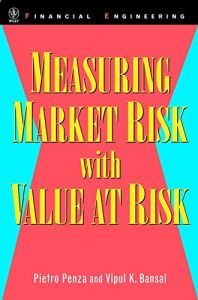Join getAbstract to access the summary!

Join getAbstract to access the summary!
Pietro Penza and Vipul K. Bansal
Measuring Market Risk With Value at Risk
Wiley, 2000
What's inside?
Within risk management, banks must know what value could be lost in each investment. That metric is ‘Value at Risk.’
Recommendation
This book is a detailed and meticulous presentation of the calculations involved in Value at Risk (VaR) measurement. According to authors Pietro Penza and Vipul K. Bansal, Value at Risk is one of the most popular approaches to measuring the risk of harm to financial portfolios. It is a valuable institutional tool. Be aware, though, the book’s message and how-to assistance will seem generally irrelevant to individual investors, except for a handful of extremely high net worth individuals at the top of the Forbes 400. Its calculations are beyond the ken of most non-mathematicians, but they will intrigue the right audience. getAbstract.com finds this book to be a useful addition to the libraries of professional investors, bankers or risk managers, particularly those with highly developed analytical skills and a certain degree of comfort with financial engineering. Some other financial managers and lay readers will find useful information here, though they may need to walk on tiptoes through those sections of the content that are over their heads.
Summary
About the Authors
Pietro Penza manages the financial risk management practice of the Rome office of PricewaterhouseCoopers. Vipul K. Bansal, Ph.D., CFA, CFP, is associate professor of finance at the Peter J. Tobin College of Business at St. John’s University. He is the co-author of Financial Engineering: The Complete Guide to Financial Innovation.

















Comment on this summary